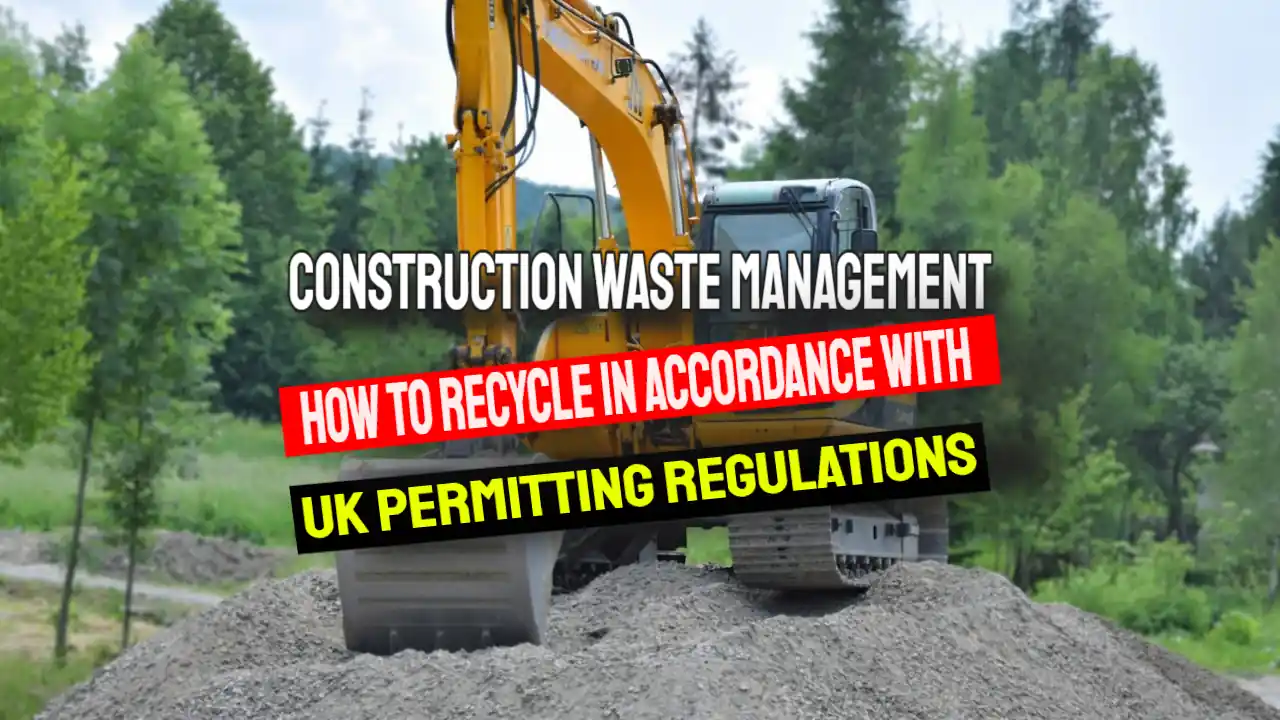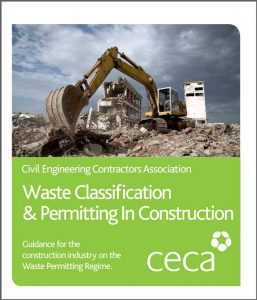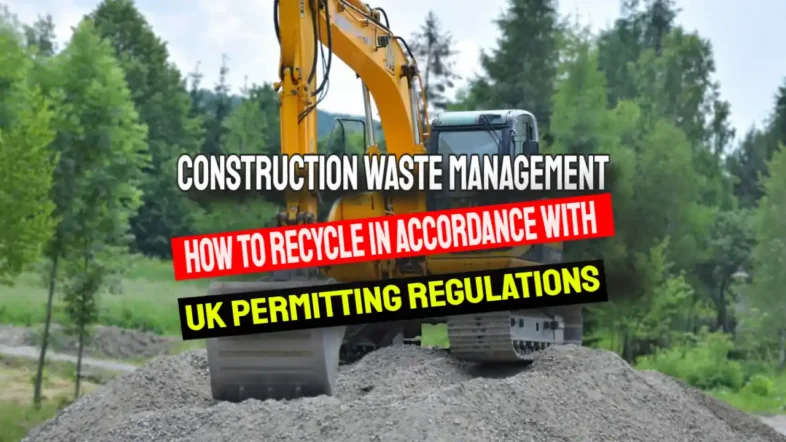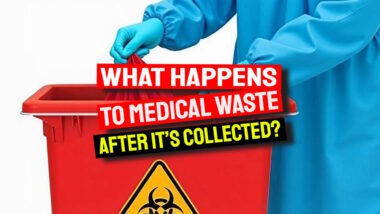 The CECA has issued a very useful construction waste management pdf. It's all about: “How to Recycle Construction Waste in Accordance with UK Permitting Regulations” is designed to help demolition contractors understand the best practice in construction waste management in compliance with the UK's waste regulations.
The CECA has issued a very useful construction waste management pdf. It's all about: “How to Recycle Construction Waste in Accordance with UK Permitting Regulations” is designed to help demolition contractors understand the best practice in construction waste management in compliance with the UK's waste regulations.
Life can become a complicated for construction site managers, when the implications of compliance with the UK Permitting Regulations are considered. So, contractors should welcome, the CECA's very useful free construction waste management pdf (SCROLL DOWN to the download link).

Overview of the CECA Construction Waste Management pdf
This document consolidates complex regulatory information into an accessible format, tailored for various roles within the construction industry—from estimators and planners to site managers and environmental advisors. It addresses the challenges of interpreting waste regulations by providing clear explanations, definitions, and decision-making tools.
Key Features and Benefits of the CECA Guide on UK Waste Classification & Permitting In Construction
1. Clarification of Waste Definitions
The guide elucidates what constitutes ‘waste' under UK law, helping contractors determine when materials like excavated soils or demolition debris are considered waste. It outlines scenarios where materials can be reused without being classified as waste, such as on-site soil improvement techniques that do not require permitting.
2. Detailed Permitting Guidance
It offers comprehensive information on waste exemptions and environmental permits across England, Wales, and Scotland. The guide distinguishes between standard and bespoke permits, and provides specific guidance on mobile plant operations like crushers and screeners.
3. Integration of Quality Protocols
The document references Quality Protocols for producing materials like aggregates from inert waste, ensuring that recycled products meet regulatory standards and can be used confidently in construction projects.
4. Inclusion of Flowcharts
A notable feature is the inclusion of flowcharts that assist in decision-making regarding waste classification and management. These visual tools help users quickly determine the appropriate handling of various materials, whether arising on-site or being imported.
5. Alignment with CL:AIRE Code of Practice
The guide aligns with the CL:AIRE Definition of Waste: Development Industry Code of Practice, facilitating the reuse of materials in compliance with environmental regulations. However, we also recommend downloading the following free guide:
Routemap for Zero Avoidable Waste in Construction
Practical Applications of the UK Waste Classification & Permitting In Construction Guide
Design and Planning: Assists in early-stage decision-making to minimize waste generation and identify reuse opportunities.
On-Site Management: Provides clear procedures for handling materials, ensuring compliance during construction activities.
Regulatory Compliance: Offers guidance on navigating the permitting process, reducing the risk of legal infractions.
Environmental Stewardship: Encourages sustainable practices by promoting the reuse and recycling of materials, contributing to waste reduction goals.

Conclusion
CECA's “Waste Classification & Permitting in Construction” guide is an invaluable tool for construction contractors committed to sustainable waste management practices. By demystifying regulatory requirements and providing practical tools for waste classification and permitting, it empowers industry professionals to make informed decisions that align with both environmental objectives and legal obligations.
For access to the full guide, visit: CECA Waste Classification & Permitting in Construction
March 2018 Archive – Our Original Post follows:
CECA's Free Construction Waste Management pdf Providing UK CW Recycling Guidance
 The Civil Engineering Contractors Association (CECA) have published new guidance on waste in the construction industry (Construction Waste Management pdf), free to all companies working in the sector.
The Civil Engineering Contractors Association (CECA) have published new guidance on waste in the construction industry (Construction Waste Management pdf), free to all companies working in the sector.
Waste Classification & Permitting in Construction – Guidance For The Construction Industry On The Waste Permitting Regime has been made freely available online.
The guide has been produced by the CECA Environment Group, with input from the Environment Agency, Natural Resources Wales, and the Scottish Environment Protection Agency.
Commenting, CECA National Civil Engineering Director Peter Crosland said that the document is a welcome addition to the complex world of waste regulation. Peter also said,
“This easy to follow document should be of use to anyone involved in dealing with waste from construction operations.”
“The information is provided in clear, simple language with easy to follow Flow Charts and includes links throughout to take the reader to more specific information if necessary.
“We hope that this guidance will be widely taken up, and will lead to the spread of best practice at all levels of the UK’s construction industry, to the benefit of our shared environment.”
The CECA recycling of construction materials pdf, which is essential UK reading for recycling and reuse of building waste in construction projects, is available on the CECA website here.
Construction Waste Management CECA Guide 2018Construction Waste Management: Profit More by Wasting Less
Let's Talk About Construction Waste Management
Hey there! You know what's crazy? Construction waste is a much bigger problem than most people realize. It's not just bad for our planet—it's also draining money from your business.
Think about this: according to the World Bank, half of all the solid waste we generate each year comes from building materials. That's huge! And it means construction companies really need to take a good look at how they're handling waste.
The Problem Keeps Growing
The numbers are pretty eye-opening. Back in 2012, we were already creating 1.3 billion tons of solid waste globally. By 2025—that's just around the corner—experts think we'll hit 2.2 billion tons annually. That's almost double in just over a decade!
This isn't just a global issue either. In the Gulf region, total waste was expected to jump from 94 million tons in 2015 to 120 million tons by 2020. That's why we're seeing places like Abu Dhabi create detailed waste management plans through initiatives like Tadweer.
But let's be honest—there are still plenty of roadblocks. The industry lacks standardization, operates on tight margins, and many companies just don't have the awareness or resources to tackle this properly. And in regions with harsh weather conditions? That adds another layer of complexity.
Three Simple Ways to Make a Difference Today
So what can your construction business do right now? Here are three practical approaches that could help your environmental footprint and your bottom line:
1) Remember the Four Rs and a D
We all know “reduce, reuse, recycle,” right? But for construction, let's add two more:
- Reduce what you use
- Reuse materials when possible
- Recycle what you can
- Recover energy from waste when possible
- Dispose as the absolute last resort
2) Start Separating Your Waste
I know deadlines and budgets are always tight, but here's a fact that might surprise you: the average construction business generates about 100 metric tons of waste yearly, and up to 90% of that could actually be recycled!
By separating different types of waste on-site, you'll send less to landfills (saving on those disposal fees) and recycle more. The financial benefits add up quickly.
3) Bring in the Pros
Let's face it—managing construction waste properly is complicated. From coordination to collection to dealing with hazardous materials, it's a lot to handle on your own. Partnering with waste management experts can help you plan material usage better, ensure proper storage, and train your team on best practices.
Plus, these partnerships typically lead to reduced operating expenses and higher recycling rates across your projects.
The Win-Win Outcome
When you implement smarter waste strategies, everybody wins. Your company reduces its carbon footprint, cuts overhead costs, and increases profits. Meanwhile, our environment gets a much-needed break.
Isn't that the kind of construction industry we all want to be part of?









So what’s the point of this? This doesn’t tell me much of nothing on how it works.?
Thank you for making the concept of waste and recycling so accessible to young children.
I know what some of this stuff is but I like your blog dude I’m gonna subscribe to your feed. Do you have a channel?.
My school will be doing a project on this?
For this to work, it needs a lot of hardwork and i am lazy!!
Halo?. I like recycling ??? Where is pdf?
There is a link to the pdf version of this page if you scroll right down to the bottom of the page.
Wonderful content! You’ve shared a common topic which everyone should know. Waste management is very necessary to keep earth green. Thanks for sharing such a great content.
this was totally epic